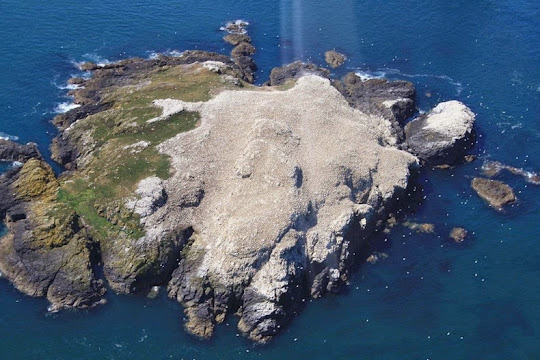
The white patch on the island that can be seen from above and off-shore, is neither snow nor limestone rock. It’s the birds themselves and their shit.
Grassholm is made up of basalt, an igneous rock of volcanic origin. It’s believed that the island was once a part of Skomer Island before it got loose during the last Ice Age.
During the late 16th century Puffins inhabited the island in tens of thousands, however, now there are none. The current soil condition doesn’t support burrows that these birds make, which is perhaps why they moved to the nearby Skomer and Skokholm Islands. Gannets have now colonized the island in huge numbers, probably arriving from Lundy island where they were disturbed. Grassholm covers only 22 acres and there are at least 80,000 Gannets plus their chicks, as well as small colonies of Guillemots, Razorbills, Kittiwakes and Shags.
The gannets were first mentioned on the island in 1860 and in 1872, 12 pairs where recorded as breeding there. By the 1890's there were 200 or more and in 1905 Cardiff Naturalists Society recorded 300 breeding pairs. Gannet population has been steadily increasing since.
The bird live in very close proximity to each other and have evolved a series of vocal and postural messages. There are always thousands of gannets in the air above the island dive fishing from all angles and from great heights. The cacophony of sounds they make is deafening.
Interestingly, the guano had killed the dense mattress of grass in this island exposing archaeological remains of settlements from the Iron Age and early Medieval periods.
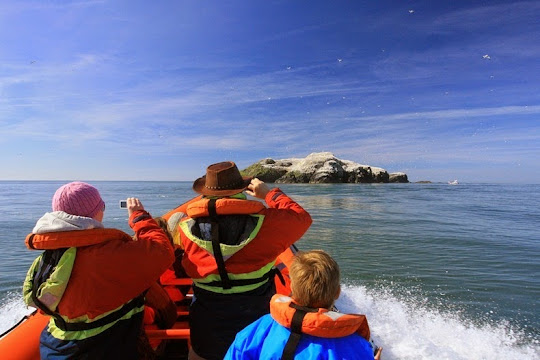
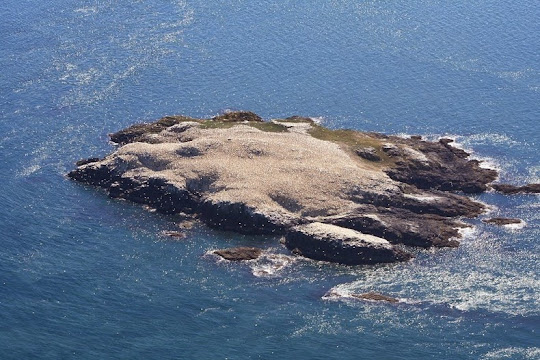
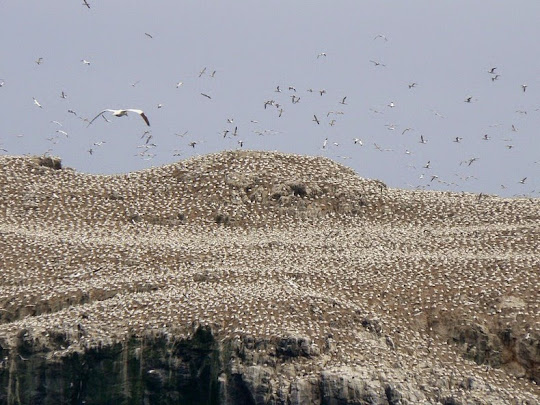
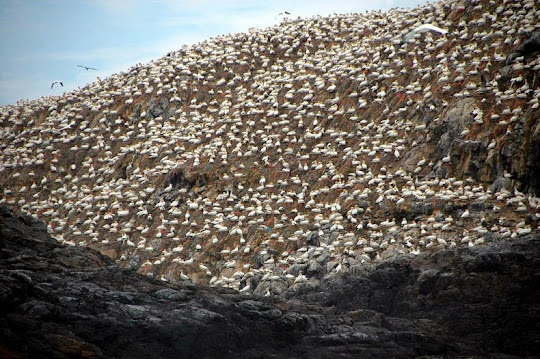
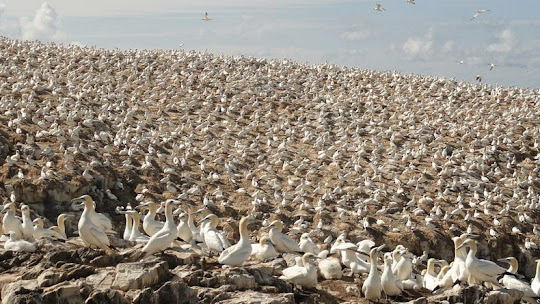
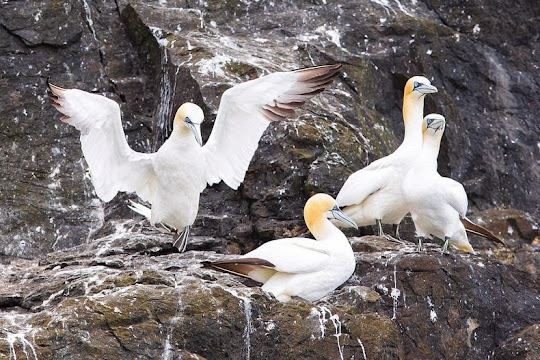
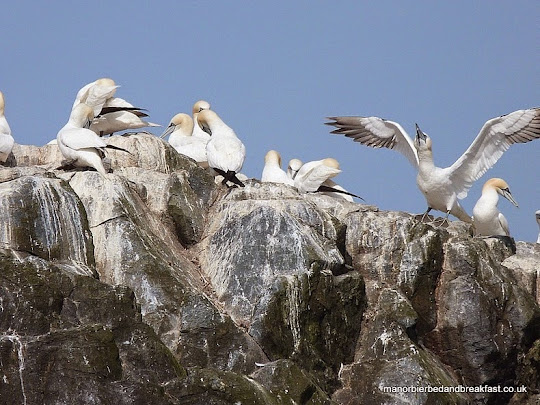
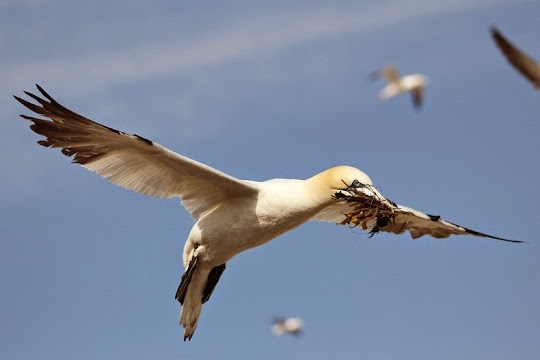

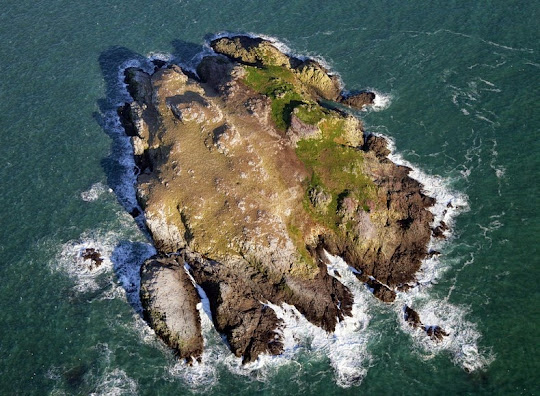
Source
